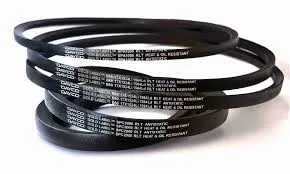- Arabic
- French
- Russian
- Spanish
- Portuguese
- Turkish
- Armenian
- English
- Albanian
- Amharic
- Azerbaijani
- Basque
- Belarusian
- Bengali
- Bosnian
- Bulgarian
- Catalan
- Cebuano
- Corsican
- Croatian
- Czech
- Danish
- Dutch
- Afrikaans
- Esperanto
- Estonian
- Finnish
- Frisian
- Galician
- Georgian
- German
- Greek
- Gujarati
- Haitian Creole
- hausa
- hawaiian
- Hebrew
- Hindi
- Miao
- Hungarian
- Icelandic
- igbo
- Indonesian
- irish
- Italian
- Japanese
- Javanese
- Kannada
- kazakh
- Khmer
- Rwandese
- Korean
- Kurdish
- Kyrgyz
- Lao
- Latin
- Latvian
- Lithuanian
- Luxembourgish
- Macedonian
- Malgashi
- Malay
- Malayalam
- Maltese
- Maori
- Marathi
- Mongolian
- Myanmar
- Nepali
- Norwegian
- Norwegian
- Occitan
- Pashto
- Persian
- Polish
- Punjabi
- Romanian
- Samoan
- Scottish Gaelic
- Serbian
- Sesotho
- Shona
- Sindhi
- Sinhala
- Slovak
- Slovenian
- Somali
- Sundanese
- Swahili
- Swedish
- Tagalog
- Tajik
- Tamil
- Tatar
- Telugu
- Thai
- Turkmen
- Ukrainian
- Urdu
- Uighur
- Uzbek
- Vietnamese
- Welsh
- Bantu
- Yiddish
- Yoruba
- Zulu
Urr . 21, 2024 21:10 Back to list
Exploring the Efficiency of Modern Industrial Machine Belts for Enhanced Performance
Understanding Machine Belts Their Importance and Application in Modern Industry
In the realm of mechanical engineering, the machine belt serves as a fundamental component that facilitates the transmission of power and motion between machines. These belts are critical in various industrial applications and are a crucial element in the design and functioning of mechanical systems. Understanding the characteristics, types, and applications of machine belts is essential for anyone involved in engineering, manufacturing, or maintenance.
Machine belts can be classified into several categories based on their construction, material, and function. The most common types include flat belts, V-belts, timing belts, and round belts. Each type is specifically designed to suit particular operational needs and constraints. For instance, flat belts are predominantly used in industrial machinery for their simplicity and versatility, whereas V-belts are engineered for higher grip and power transmission efficiency, making them ideal for driving pulleys at speed.
One of the critical advantages of machine belts is their ability to handle varying levels of load and operational speeds. The material composition of belts varies widely—from rubber and synthetic materials to leather and metal—which allows for flexibility in various working environments. Rubber belts, for example, are generally more elastic, providing excellent traction and shock absorption capabilities. On the other hand, metal belts are often used in high-temperature and heavy-load applications due to their durability and strength.
In modern industries, machine belts are integral to the operation of conveyor systems, motors, and pumps
. In manufacturing plants, for instance, belts are employed in conveyor systems to move products along the production line, ensuring efficiency and speed. Similarly, in automotive applications, engine components depend heavily on various belts, such as serpentine belts, to synchronize the crankshaft with the accessories, thereby optimizing engine performance.machine belt

Apart from power transmission, machine belts can also serve as a mechanism for controlling speed and torque within a system. Variable-speed drives, which allow machines to operate at different speeds depending on the load, rely on belts to adapt to changing operational requirements. This adaptability can significantly enhance productivity and reduce energy consumption in industrial processes.
Maintenance of machine belts is vital for ensuring the longevity and efficiency of equipment. Regular inspections and timely replacements can prevent unexpected breakdowns and costly downtimes. Engineers recommend checking for wear and tear, tension, and alignment to maintain optimal performance. Advanced monitoring technologies, such as IoT devices and sensors, now enable real-time tracking of belt conditions, allowing for proactive maintenance strategies that enhance operational reliability.
The future of machine belts is also being shaped by innovations in material science and engineering. Researchers are exploring advanced materials, including composites and smart materials, to enhance the performance characteristics of belts, such as resistance to wear, heat, and environmental factors. Development in 3D printing technology could also revolutionize the manufacturing of custom belts tailored for specific industrial needs, increasing efficiency and reducing waste.
In conclusion, machine belts are indispensable components in contemporary industrial applications, facilitating power transmission, and enhancing efficiency across various systems. With ongoing advancements in material sciences, engineering practices, and maintenance technologies, the role of machine belts is poised to evolve continuously, ensuring they remain a cornerstone of industrial machinery for years to come. Understanding their types, applications, and maintenance needs is essential for optimizing industrial operations and achieving long-term success in manufacturing environments.
-
Korean Auto Parts Timing Belt 24312-37500 For Hyundai/Kia
NewsMar.07,2025
-
7PK2300 90916-T2024 RIBBED BELT POLY V BELT PK BELT
NewsMar.07,2025
-
Chinese Auto Belt Factory 310-2M-22 For BMW/Mercedes-Benz
NewsMar.07,2025
-
Chinese Auto Belt Factory 310-2M-22 For BMW/Mercedes-Benz
NewsMar.07,2025
-
90916-02660 PK Belt 6PK1680 For Toyota
NewsMar.07,2025
-
drive belt serpentine belt
NewsMar.07,2025

